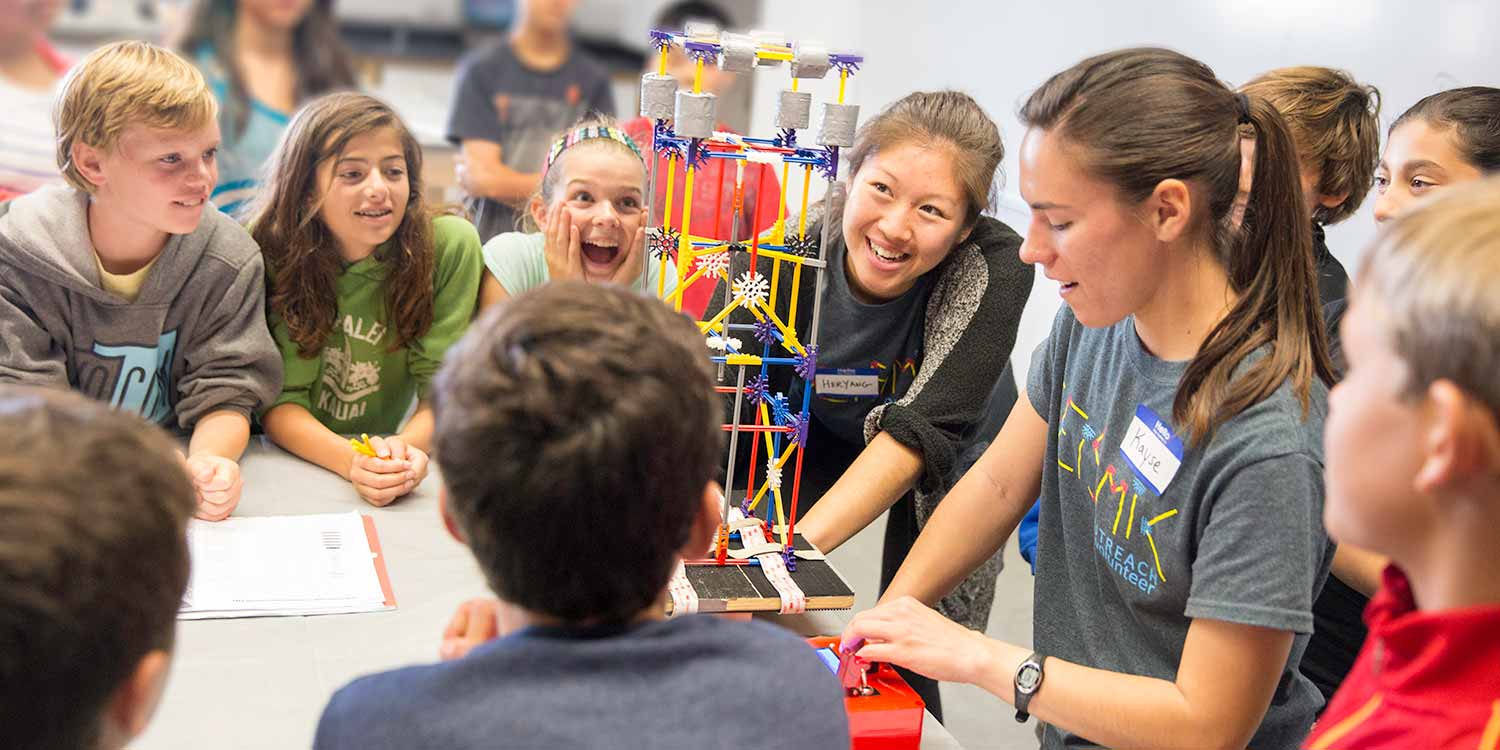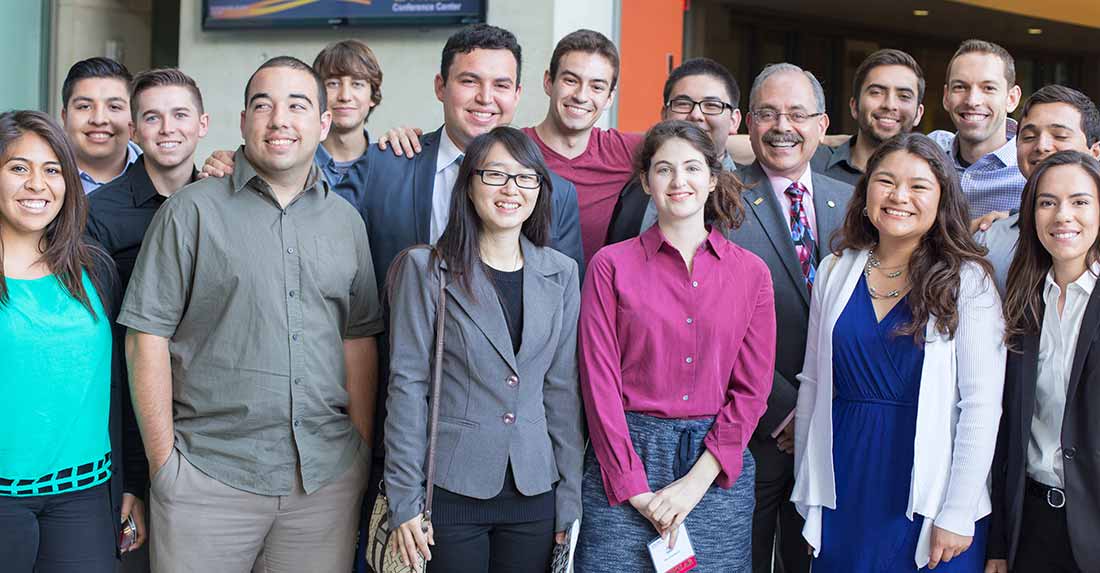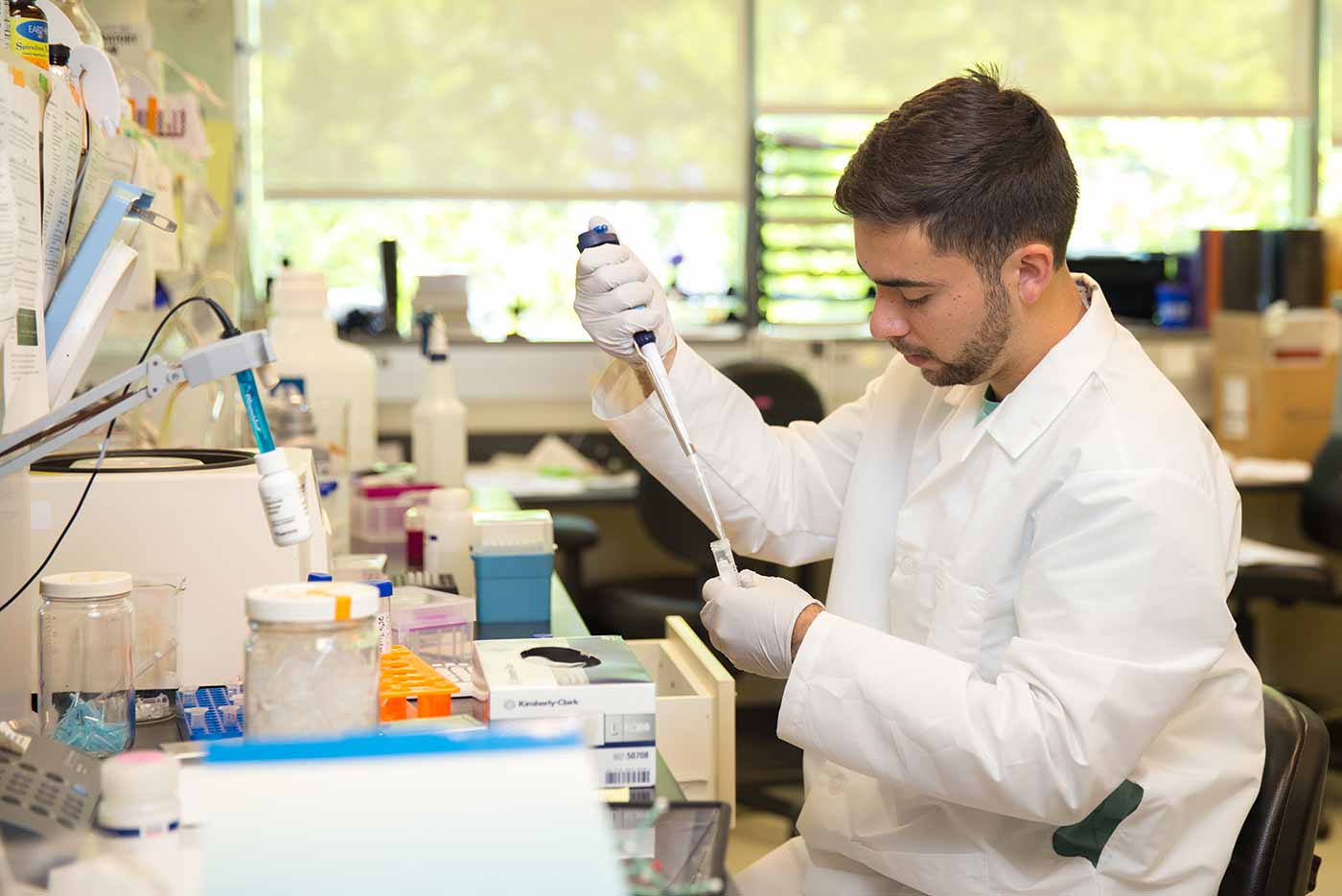
By:
- Ioana Patringenaru
Published Date
By:
- Ioana Patringenaru
Share This:

IDEA Scholars Program Boosts Retention Rates of Underrepresented Engineering Students
During the past four years, when the going got tough, UC San Diego bioengineering major Ismael Munoz knew he could always rely on his fellow IDEA Scholars for encouragement and a sense of community. “I see my peers doing crazy awesome projects and that motivates me to excel,” he said. “We encourage each other.”
Munoz wants to become a neuroscientist and is now well on his way to realizing his dreams. He and 15 of his classmates were part of the first-ever class of IDEA Scholars, a program designed to increase retention and graduation rate for students underrepresented in the field of engineering, including low- income and first-generation students, women, and students coming from low-performing school districts and underserved communities.
When all 16 students graduate by summer 2016, the IDEA Scholars program will have retained all but six of the 22 students it started out with—much higher than the 54 percent retention rate for students with similar demographics who were not part of the program. Two students in the program dropped out of engineering, but they remained in a STEM major. The other four have switched to different campuses to be closer to home, but are still studying and graduating with an engineering degree.
“We tell them: we’re here to see you through to graduation, to help you realize your dream and make it come true.” said Michelle Ferrez, director of the IDEA Student Center.
The program
Even before they start classes, IDEA Scholars take part in the residential Summer Freshmen PrEP program, so on the first day of classes they already can see familiar faces among their fellow students. All IDEA Scholars are also enrolled in an ENG 1-3 class series to learn time management, study skills, as well as engineering research methods and how to conduct a research study. They also attend a series of technical workshops where they learn about a wide range of topics, including programming with Python and Matlab, designing with CAD and other career-related skills. The first year, IDEA Scholars are also mentored by upperclassmen in the program. They’re also required to give back to the school by getting involved in outreach programs.

The IDEA Student Center uses strategies that have proven to be effective, said Carlos Coimbra, the outgoing faculty director of the IDEA Student Center at the Jacobs School of Engineering, which coordinated the scholars program. “We include them in research and build a feeling of community, even before classes start. We ask them to volunteer for school events. Their experiences are very rich.”
That sense of community was key, said Olivia Graeve, a professor of mechanical engineering who will take over Coimbra’s leadership role in July. “They have the sense that they belong to something bigger than themselves,” she said.
Sense of community and research
The community of IDEA Scholars was Munoz’s motivation. Research was his passion. The bioengineering major is headed for a prestigious neuroscience graduate program at Johns Hopkins University after graduation. “I am interested in figuring out the intricacies of life and disease states as well as engineering potential therapeutics,” he said.
Munoz met bioengineering professor Todd Coleman at a Summer PrEP workshop. He has been doing research in Coleman’s lab for the past four years. His current work focuses on cell cultures, but he’s also worked with rats equipped with small electrodes that function as brain-machine interfaces. “I’ve learned that it takes time to produce scientific results and there’s a lot of troubleshooting,” he said.

Outreach and industry
Outreach is where Kayse Sheppard, a structural engineering major, found her niche. During the summer PrEP program, her mentor told her about the seismic outreach program in the Department of Structural Engineering. The program brings sixth graders from all over San Diego to campus for a lesson on how to make buildings earthquake-proof. The children build structures out of K’NEX and test them on miniature shake tables. Pretty soon, Sheppard was helping out. Finally, last year, she took over and started running the program herself. “It helped me to focus more,” she said.
As a first-generation college student, Sheppard said she was happy to find mentors, including structural engineering professor Lelli Van Den Einde. Sheppard struggled with programming, but liked project-based classes. In one of them, she got to build a miniature-reinforced column and bridge deck that could carry a 900-pound. load. Her goal is to become a Disney Imagineer. “I like design,” she said. “It’s really creative.”
All IDEA Scholars also took part in a large-scale research project led by Coimbra, who specializes in solar power forecasting. They developed the basic concepts for a new generation of smart solar farms, which take full advantage of state-of-the-art forecasting, control and storage systems to deliver clean and renewable power to the grid. “The goal was to keep them engaged until they found a position in a research lab,” he said.
The IDEA Scholars program has now grown from 22 to 50 students per year. But the goal is to expand it further. “The model is scalable,” said Ferrez. “When the following three factors are combined: undergraduate research, mentorship by faculty and peers and student cohort building, the overall academic success and engineering student retention rate increases, especially for underrepresented students, first-generation students and women,” she explained. “This type of program model also positively impacts a student’s decision on career choice and the pursuit of graduate engineering education early in the student’s academic career. The IDEA Scholars Program exemplifies this model and we look forward to growing the program to serve more students so that we may have a greater impact on engineering student retention”.
Share This:
You May Also Like
Stay in the Know
Keep up with all the latest from UC San Diego. Subscribe to the newsletter today.


